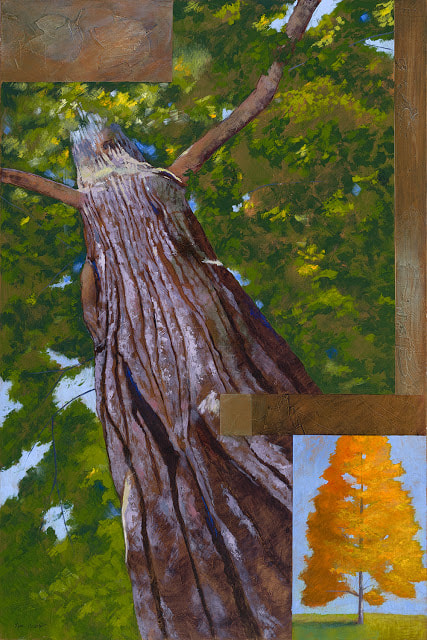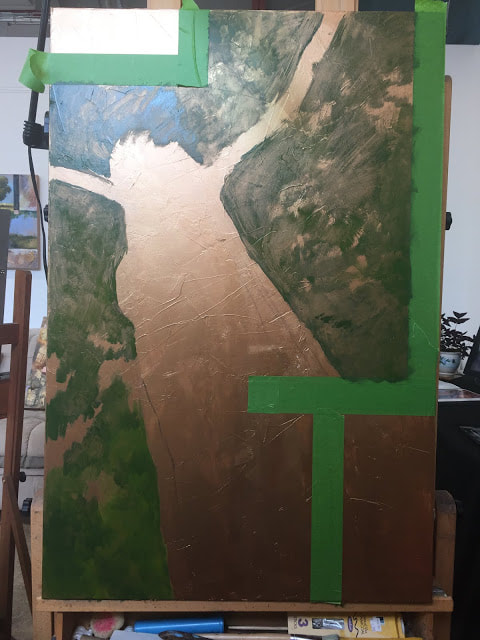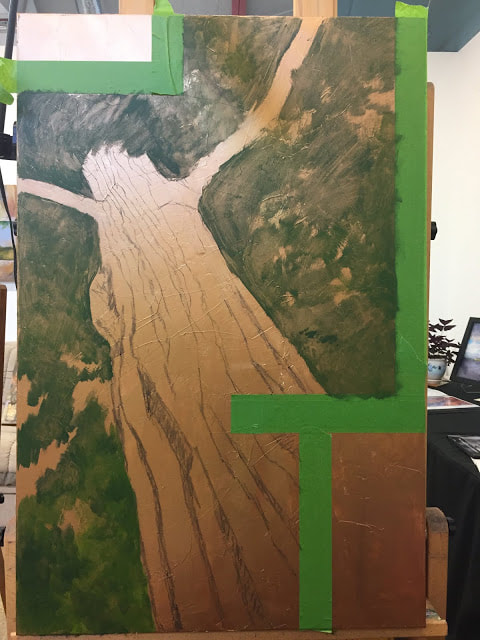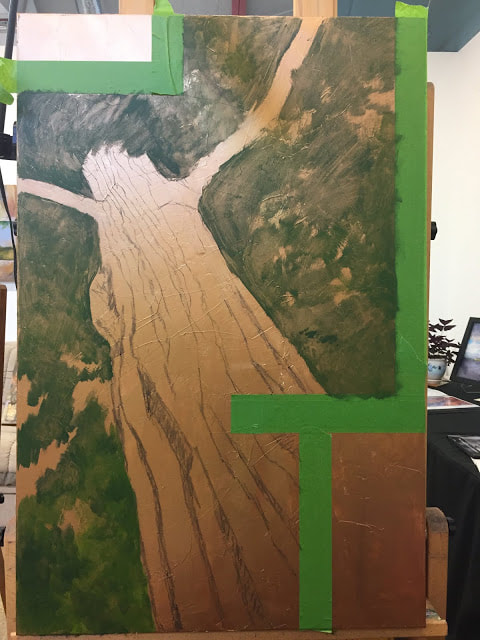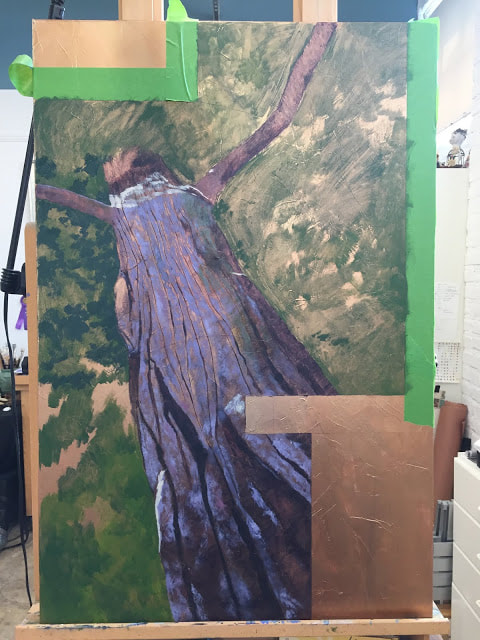|
Is it odd that I actually liked writing term papers? Research is fun for me. I realize that that is one of the reasons that I love leading tours at the Smithsonian National Portrait Gallery. In order to share the art and the history with visitors, I am required to research.
My love of research is why working in series makes since for me. For the "From Just a Seed" series, visiting the historic and amazing trees is part of the fun of making the work. Finding out where the trees are located, and a little about the history of the trees feeds my love of research. One of the things that fascinates me so much about this project is learning more about the individual species of trees. There is endless fascination in the variety of leaves, the structure of the trunks, and the growth patterns. The history related to the specific trees I have found has also been inspiring because some of these trees have quite a background. With that in mind, "Tulip Poplar" captivated me. Here's the backstory: This painting represents a famous tree because it was planted by one of the most famous people in American history. It is located on the Mount Vernon estate and was planted by George Washington. Now, I love George Washington. His life was astounding. In fact, I have read at least 2 books about our first president this year alone. I always share an image of him when I lead tours. He looms large for me. On the grounds of Mount Vernon, Washington used a very symmetrical gardening plan. If there was a tulip poplar on one side of the garden, there would be a matching tree on the other side. If you visit Mount Vernon, you may see this tree on one side of the bowling green, which is the large expanse of yard as you enter the Mount Vernon estate. For this painting, I wanted to show how the tulip poplar shoots up into the sky. In the lower right side of the painting, you will see the beauty of a tulip poplar in autumn, while in the upper left side of the painting, you will see the leaves of the tree. Each painting in this series provides a little story about an individual tree. Tulip Poplars are native to the east coast of the United States, and can grow up to 160 feet in height. Here are a few photos (excuse the quality!) to show you the work in progress:
10 Comments
I really enjoyed reading your blog. The article about the healing power of art brought me here from your newsletter. I've always felt that making art heals, but never thought of it from the angle of viewing art. I'm curious about this painting. What paint did you use, acrylic? Is is primed in a metallic bronze or is it just the way the light hits? Thank you!
Reply
Thanks so much for letting me know that you enjoy reading my blog. I will keep you posted via my emails whenever I have a new blog published. Yes, I used acrylic for this painting. The canvas is primed in white gesso, but I did paint the entire canvas in copper acrylic paint prior to continuing with the piece. A textured surface was also applied. Thanks again!
Reply
Kevin K
12/3/2019 11:17:52 am
Hi Lynn, would you mind your blog with art-in-process images of Washington's tulip poplar being shown at our little local garden club meeting to encourage caring for an American Forest Foundation offspring of your 1765?
Reply
12/3/2019 12:40:49 pm
Hi Kevin, Please give me more information. How many people do you have at your meetings? Would it make sense for me to come and speak to your group about my art practice and that series of historic tree paintings? Thank you for your interest. Warmly, Lynn
Reply
Kevin K
12/5/2019 06:20:58 am
Our garden club only attracts one dozen tired faces tolerant of shortest possible meeting; less than an hour including boring administrative business.
Reply
12/5/2019 08:31:53 am
A shame. I would have loved to have been able to share. Please feel free to show my blogpost and encourage your members to come see my work at the Workhouse Arts Center in Lorton, VA if they are in the neighborhood. Where is the tree that you mention that is an offspring of GW's tree? 9/12/2022 11:06:46 am
The grounds of Mount Vernon, Washington used a very symmetrical gardening plan. If there was a tulip poplar on one side of the garden, there would be a matching tree on the other side. Thank you for the beautiful post!
Reply
Leave a Reply. |
|

